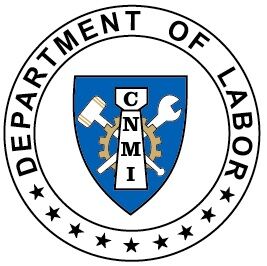(CNMI DOL) — The CNMI Department of Labor would like to promote the CNMI Registered Apprenticeship Program across the Marianas by informing possible participants and future employers of how it works and why they should take advantage of these opportunities. Especially with the touchback looming in the not too distant future, taking advantage of a Registered Apprenticeship Program can help your business in the long term by investing in U.S. and U.S. eligible workers who don’t need visas to work in the CNMI.
What are the benefits to participants in becoming a registered apprentice?
The benefits to an individual who participates in a Registered Apprenticeship Program or RAP is that they earn while they learn. Which means, they will receive training by an identified mentor within the work sponsor/employer and get paid for it. An approved Work Process Schedule is used during this portion of the training, also known as the On-the-Job Learning or OJL component of the RAP. Additionally, the work process schedule includes an outline of courses that the apprentice must take and successfully complete, which is called the Related Training Instruction component of a RAP. These courses may be taken with a training provider and/or a postsecondary institution such as Northern Marianas College. These courses may be fully subsidized — FREE! — by the CNMI Workforce Investment Agency through the Workforce, Innovation, and Opportunity Act’s Title 1 programs. After the successful completion of their RAP, the apprentice receives a nationally recognized credential from the U.S. Department of Labor.
What are the benefits to employers?
The benefits for employers include a fifty percent reimbursement of the apprentice’s wage to cover the extraordinary cost associated with their RAP training. This is a great incentive to any employer who wants to participate in a RAP. The work process schedule can be catered to the employer’s needs. In other words, employers can choose the courses in the apprentice’s RTI, as well as the standards created for the OJL portion. There is no additional cost to the employer for participating in a RAP. This allows employers to upskill their current workforce while creating a pipeline of skilled workers. This little to no cost training approach counters the expenses of hiring foreign labor. Thus, this allows employers to start preparing for their future workforce needs especially with the anticipated phase out of CW-1 permits.
How does the CNMI benefit from apprentices in the workplace?
A Registered Apprenticeship Program offers an affordable training opportunity for individuals who may not have the resources to attend college. The cost of a Registered Apprenticeship Program to individuals is little to no cost which makes it more attractive, especially because they will be earning a wage at the same time. Employers also greatly benefit from this because they are building a skilled workforce without interrupting their operations and/or services. It also doesn’t cost them anything other than the time and energy to train apprentices. This can greatly impact the CNMI’s economy by building a sustainable workforce with employees who earn competitive wages making them afford the cost of living. The earnings they make will circulate into our economy instead of money going outside the CNMI which is often the case with our foreign workers. Businesses investing in their workforce by employing U.S. eligible workers can see a positive Return on Investment at the end of each RAP training.











